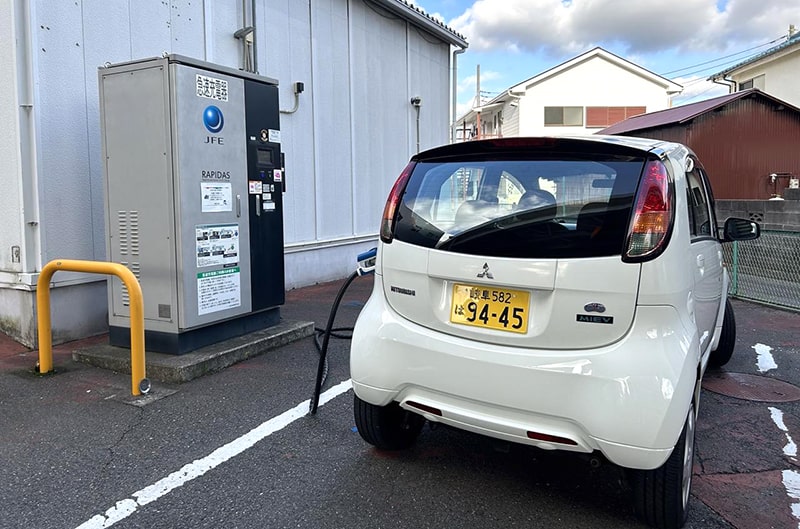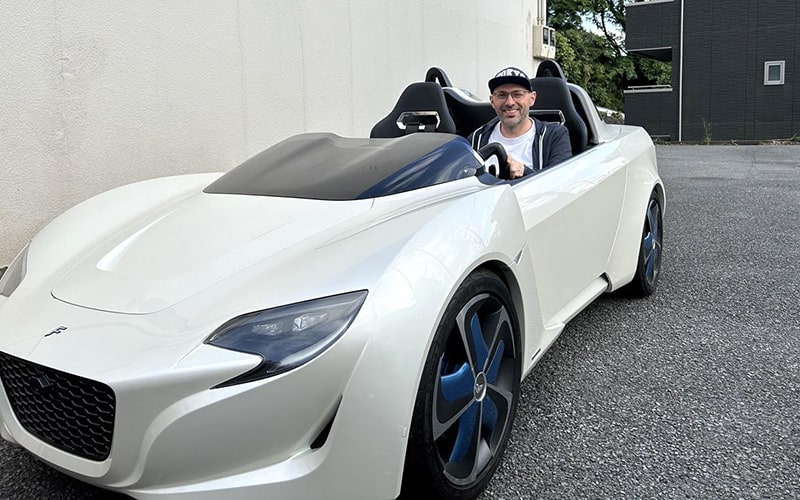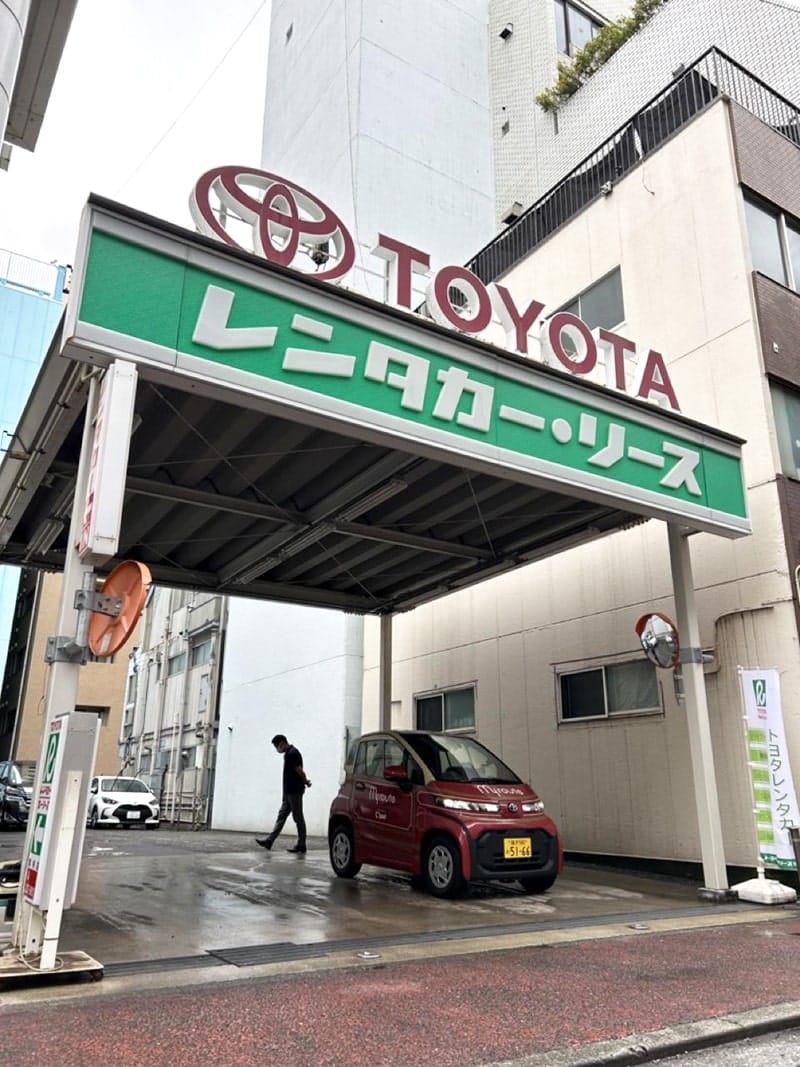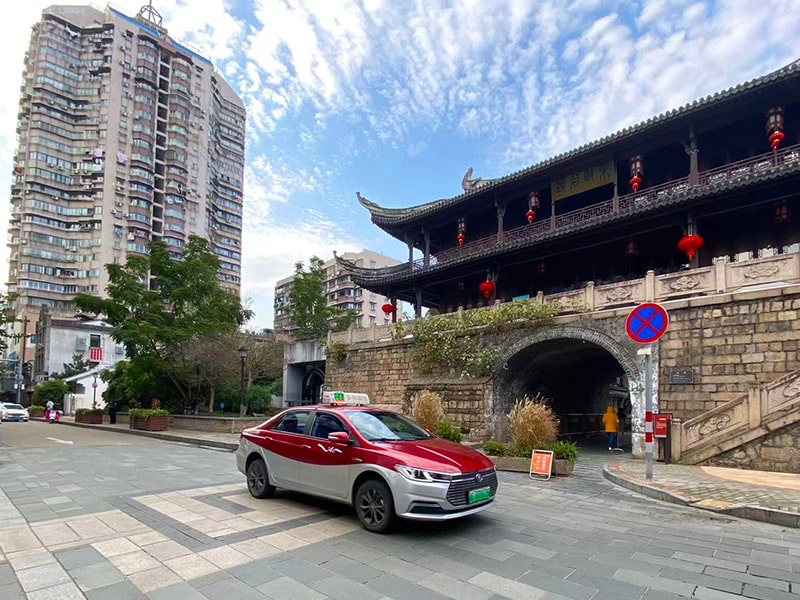
Our NEX train pulled into Yokohama Station for our efficient trip from Tokyo Narita airport into the centre of the city. A quick hop onto a local JR train and I was marvelling at how easy it was to travel on public transport around Japan. With the best public transportation systems, we don’t need cars and this view matched the view of our assistant for the weekend – Rie – who lives and works in Tokyo.
“I never learnt to drive – I simply don’t need a car in Tokyo as the public transport is so efficient and goes everywhere I need”
Her view matches that of many other Tokyo citizens – just 12% of journeys in the city are completed by car (compared to 87% of trips completed by car in the US).

One of the many JR trains passed overhead in Yokohama, reducing car use
We were on Day 1 of our short trip to Japan to explore the Japanese EV industry through driving 50% of its offerings. There’s only a handful of EVs on sale in Japan from the automakers there, and so far, apart from the Nissan Leaf, recent offerings have left a bit of a disappointing taste in the mouth. So are they actually serious about electrification, and what does the future hold for one of the largest vehicle exporters in the world?
In 2013, 40% of the cars sold that year were Kei cars, or Keijidōsha – meaning extremely small cars with small engines to benefit from tax breaks and fit down the narrow city streets in Japan. For years, Japan has been the king of small cars, well before the famous Wuling MiniEV from China and has produced Kei cars in great quantity over the last 50 years. Let’s not forget that Japanese cars are world-renowned for efficiency and build quality, the same of which cannot be said of the Wuling MiniEV.
But at an EV show in Yokohama next to where we were filming was an array of Japanese EVs (not many of them admittedly) with BYD front and centre. It would have been unthinkable 20 years ago, but the Japanese automotive industry has been asleep at the wheel, stopped innovating in the 1990s, and has now been taken over by the Chinese.

An early EV Kei Car from Mitsubishi
Sony action camera or DJI action camera? DJI every time.
Toshiba laptop or Xiaomi pad? Can’t beat Xiaomi at that price point.
Toyota EV or BYD EV…well…
But perhaps this is a little unfair – which is why we decided to make the trip to Japan to see for ourselves.
We were actually testing 3 new EVs – a Toyota C+Pod, a tiny city runaround with plastic body panels and only two seats, the Nissan Sakura which was like a mini-Ariya (and completely blew me away – I am smitten) and something called the FOMM ONE and FOMM Sports Concept – I will keep that a secret for now.

FOMM Sports Concept
It was clear to me that the Japanese automakers have knowledge – especially Nissan – in making EVs. The market demand is there too. As soon as the Nissan Sakura went on sale, they sold 23,000 units in a couple of months, more than the entire year of EV sales across Japan for every brand.
Japan is rich in automotive culture, as well as having one of the best public transportation systems in the world. They preserve and keep their cars for a long time, meaning they have one of the oldest car fleets in the world (and not just vintage Porsche 356s) so there is a great deal of interest in EVs from the current car community.
My fear is that without leadership change, or with fresh ideas, the Japanese EVs are going to be always lacking in technology or battery tech. Where is the news about gigafactories being built in Japan? None – it’s gone very quiet over in the land of the rising sun and that’s a worry.

Picking up
A conglomerate as big as Toyota which leads automotive sales around the world has a considerable impact on how quickly the whole world electrifies their car fleets. If Toyota committed to EVs then across the world, countries and economies would be quickly forced into building charging networks, exploring greener grids and cleaning up the air in our cities. But for as long as they drag their feet – the global EV update will be slowed until a company like BYD takes over and offers consumers what they want in these markets.
Find out what we think about the new range of EVs from Japan and if they can cut muster in the global automotive market against mostly its Chinese neighbours on the Fully Charged SHOW in a few weeks.
About the author
Elliot Richards is originally from the UK and has been living & working in China for the past 14 years, calling both Beijing and Shanghai home. After leaving life as a junior architect, he has moved into exploring the world of China and has seen the country grow rapidly since 2008.
Elliot began looking at the growing world of renewables and EVs in 2016 after his first trip in an electric BYD taxi in Shenzhen. He is the owner of a Xpeng G3 and loves travelling in his EV round China. Elliot is now the East Asia Correspondent for the Fully Charged SHOW.







